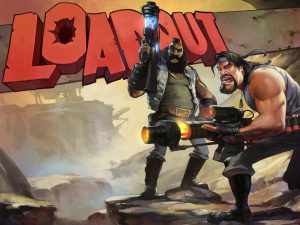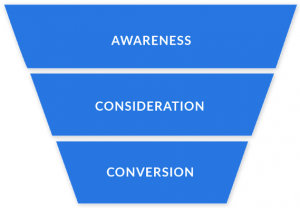How to keep your agile marketing backlog healthy, built around bite-sized slices of value which can be achieved in a sprint.
While agile marketing is more about culture and people than processes and tools, sometimes you just need a really good workflow to get into the rhythm of agile. Having a great agile marketing backlog can make an impactful difference for teams. After working with hundreds of teams over the past decade, I’ve boiled it down to six key elements of great agile marketing backlogs.
First, let’s level-set on the definition and purpose of a backlog. An agile marketing backlog is simply a team’s prioritized list of future work. It’s created so that a team understands the most important work, avoids working on unimportant side projects, has a shared understanding of what’s being asked of their team and has a flexible method to add, delete and shift work as they learn new information.
#1) Everyone contributes
A great agile marketing backlog is created and maintained by all team members. When new information is learned or ideas are generated from brainstorming sessions, any team member can add to the backlog.
With the idea that any team member can add to the backlog, you create a team that feels invested, each individual being a valuable contributor to the work.
Some teams only train select members on the tool, but the best teams I’ve observed are ones where everyone has access and is trusted to contribute ideas. Even though not all backlog items will actually get implemented, shared ownership makes for better team work.
#2) Ordered by priority
A great agile marketing backlog is ordered by priority. The first priority is at the top of the backlog list and subsequent priorities fall beneath. The benefits of clearly ordered priorities are transparency to the team and stakeholders in real time around what the team plans to accomplish next.
It’s best practice to have priorities ordered by a single role, such as a marketing owner, that meets regularly with stakeholders to understand business priorities. In addition, this role spends time looking at campaign performance and adds, removes and re-orders backlog items on a daily basis as more is learned.
Prioritization is best served when looking through the lens of the customer and the value the work brings, rather than by arbitrary timelines or who requested the work.
#3) Bite-sized slices of value
Many teams struggle with understanding the right size for a product backlog item. A lot of new teams either go way too large, putting in an item that is a project, campaign or major initiative. While that may be okay when the team is in very early ideation, ultimately the items need to be the smallest unit of value that can be delivered.
On the other hand, some teams take smallest unit too far and put things out there such as, “Edit the blog” which is very bite sized, but doesn’t create any value on its own.
Find the sweet spot in the middle.
What’s the smallest thing your team can do to add value? Here are a few examples of generally accepted bite sized pieces (although what is easily achievable to one company may be difficult and slow in another):
- Social media post
- YouTube video
- Blog article
- Landing page
The ideal size will be something that an agile marketing team can complete quickly — typically within a sprint — that in an ideal world can then go live to customers.
Getting your marketing backlog items the right size can be tricky early on, but with a little practice your team will soon be able to create meaningful bite size chunks of work.
Read next: More on agile marketing from Stacy Ackerman
#4) Understanding the customer benefit
A great technique for getting everyone on the team to understand the customer benefit is to turn your marketing backlog items into customer stories (also known as user stories).
A customer story is still about the deliverable, but it helps frame the work into a simple sentence that answers the questions: Who is the customer? What is the benefit of this work to the customer?
This format is a simple practice that all team members can get involved with. While it may feel like an extra step, agile is all about team work and shared understanding, so great agile marketing teams take the time.
The customer story format goes like this:
As a {customer role}, I want {work needed} so that {customer benefit}.
Here are a few examples:
As a mom, I want to be notified by text when there is a sale so that I don’t have to collect coupons.
As a new resident to the area, I want to receive an email with a list of pediatricians taking on new patients so that I don’t have to keep looking online.
As a gym member, I want to get points towards merchandise every time I visit so that I am motivated to keep going.
The customer story isn’t actually meant for the customer to ever see—it’s meant for the marketing team to have a conversation around the work. So don’t worry about the perfect language; it’s more important to have meaningful discussions around the work.
#5) Clear acceptance criteria
With agile marketing teams, it’s best practice to avoid detailed instructions that place limits on a team’s ability to innovate. However, a few callouts as to what’s needed in the backlog item can be really helpful.
“Acceptance criteria” is a term that describes what the owner of the work needs to see to “accept” a story. Anyone on the team can contribute to acceptance criteria, but the marketing owner or product owner role, if you have one, is accountable.
Acceptance criteria simply add additional details to the customer story. Using this story example, we can now show it with acceptance criteria:
Customer Story
As a gym member, I want to get points towards merchandise every time I visit so that I am motivated to keep going.
Acceptance Criteria:
- Offer valid only for company-branded merchandise.
- Not to exceed $ 100 in value.
Not every backlog item warrants acceptance criteria, so you don’t need to check a box to make sure it’s there or not. However, think through key points that your team should understand or what could lead them down the wrong path, and if those exist, acceptance criteria can help.
#6) Size of work is understood
Sizing work is important to understand the cost/benefit of doing the work in the first place. There may be a lot more value realized in the team doing three small stories versus on large one.
Sizing work is also a good indicator of effort, and if a story is too big to be completed in a sprint, it may need to be split into smaller stories to get the recognized value earlier.
Finally, sizing can help with long-term planning and teams understanding how much work they can accomplish.
In order to avoid over-analyzing estimates and worrying about individual task time, story point estimation is a great technique for the whole team to align on the size of the complete effort. Story point estimation is simply a comparison of one kind of work to another, taking into account effort, complexity and uncertainty.
The scale most teams use goes as follows:
1, 2, 3, 5, 8, 13
By working together, the team comes to a decision on the size of the work. If they decide that a social post is 1 point, they may say that a blog is more effort, so a 3 point story.
Story pointing should be done early, before the teams plans its work so that they can quickly recognize how much work they can take on in a sprint.
Backlog refinement
The marketing backlog evolves as new information is learned, so by getting in a regular rhythm of refining your team’s backlog, you can maintain great backlog health. For new teams, this may need to be every week.
The goal is to have your backlog ready to go about two to three sprints ahead of what the team is currently working on. This way, you’ll be ready to have meaningful conversations when your team plans their sprint.
The post 6 key elements of a great agile marketing backlog appeared first on MarTech.
MarTech(41)
Report Post







